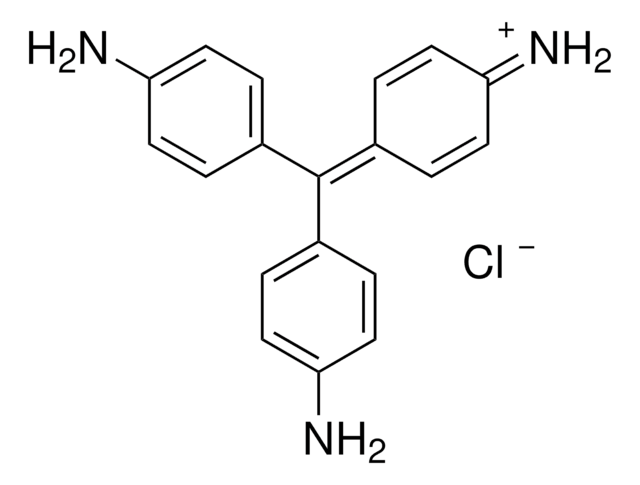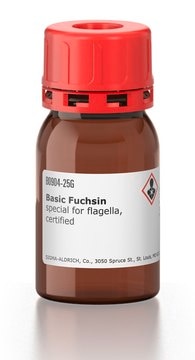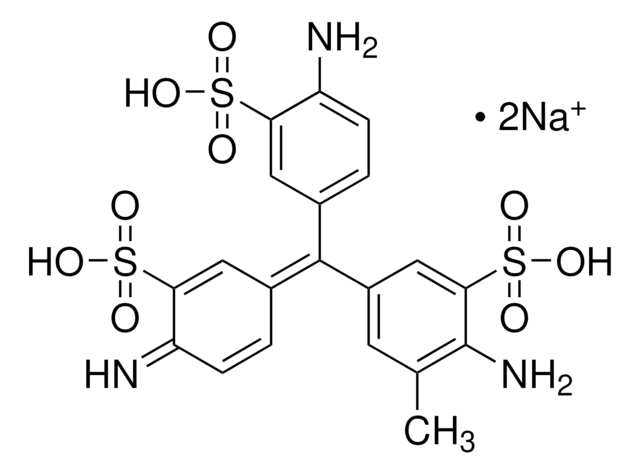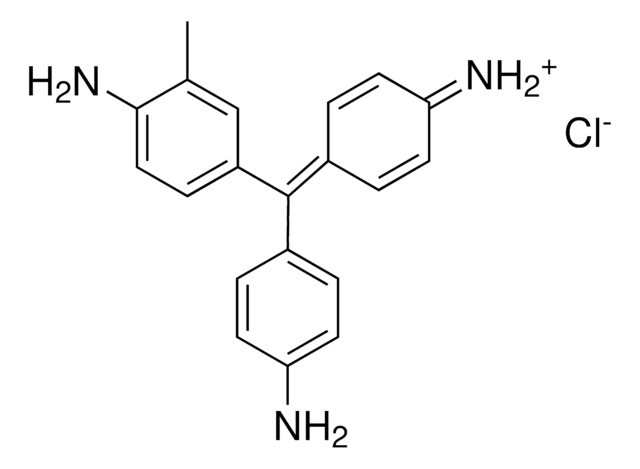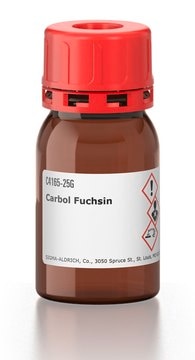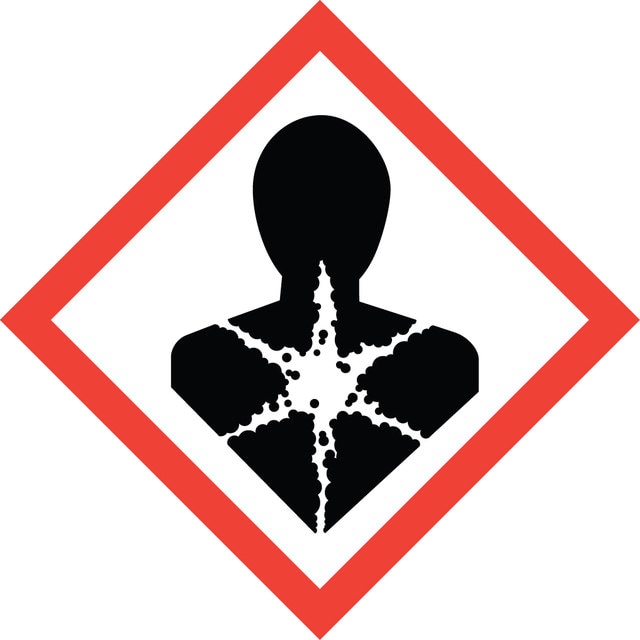857343
Basic Fuchsin
certified by the Biological Stain Commission, Dye content ≥88 %
Synonym(s):
Basic Parafuchsin, Basic Red 9, Magenta™ O, Parafuchsin hydrochloride, Paramagenta hydrochloride, Pararosaniline chloride, Pararosaniline hydrochloride
About This Item
Recommended Products
grade
certified by the Biological Stain Commission
Quality Level
form
powder
composition
Dye content, ≥88%
color
green to dark green
pH
1.0-3.1, purple to red
mp
268-270 °C (dec.) (lit.)
λmax
544 nm
ε (extinction coefficient)
≥11000 at 235-239 nm in 50% ethanol at 0.003 g/L
≥17000 at 287-291 nm in 50% ethanol at 0.003 g/L
application(s)
diagnostic assay manufacturing
hematology
histology
storage temp.
room temp
SMILES string
[Cl-].Nc1ccc(cc1)C(\c2ccc(N)cc2)=C3/C=CC(=[NH2+])C=C3
InChI
1S/C19H17N3.ClH/c20-16-7-1-13(2-8-16)19(14-3-9-17(21)10-4-14)15-5-11-18(22)12-6-15;/h1-12,20H,21-22H2;1H
InChI key
JUQPZRLQQYSMEQ-UHFFFAOYSA-N
Looking for similar products? Visit Product Comparison Guide
Related Categories
Application
Biochem/physiol Actions
Suitability
Legal Information
signalword
Danger
hcodes
Hazard Classifications
Carc. 1B
Storage Class
6.1C - Combustible, acute toxic Cat.3 / toxic compounds or compounds which causing chronic effects
wgk_germany
WGK 3
flash_point_f
Not applicable
flash_point_c
Not applicable
ppe
Eyeshields, Gloves, type P3 (EN 143) respirator cartridges
Choose from one of the most recent versions:
Certificates of Analysis (COA)
Sorry, we don't have COAs for this product available online at this time.
If you need assistance, please contact Customer Support.
Already Own This Product?
Find documentation for the products that you have recently purchased in the Document Library.
Our team of scientists has experience in all areas of research including Life Science, Material Science, Chemical Synthesis, Chromatography, Analytical and many others.
Contact Technical Service